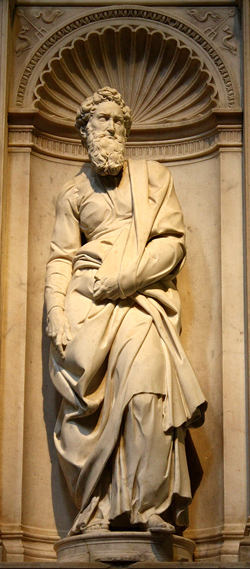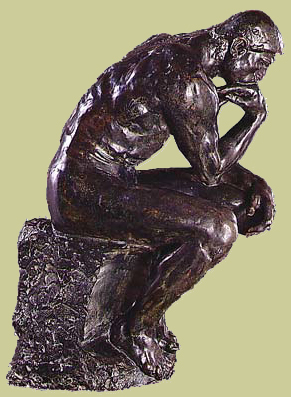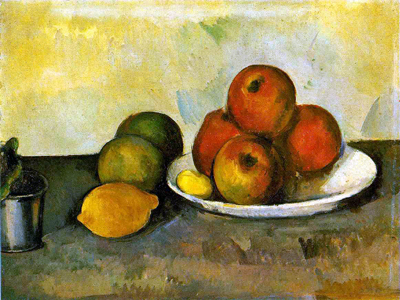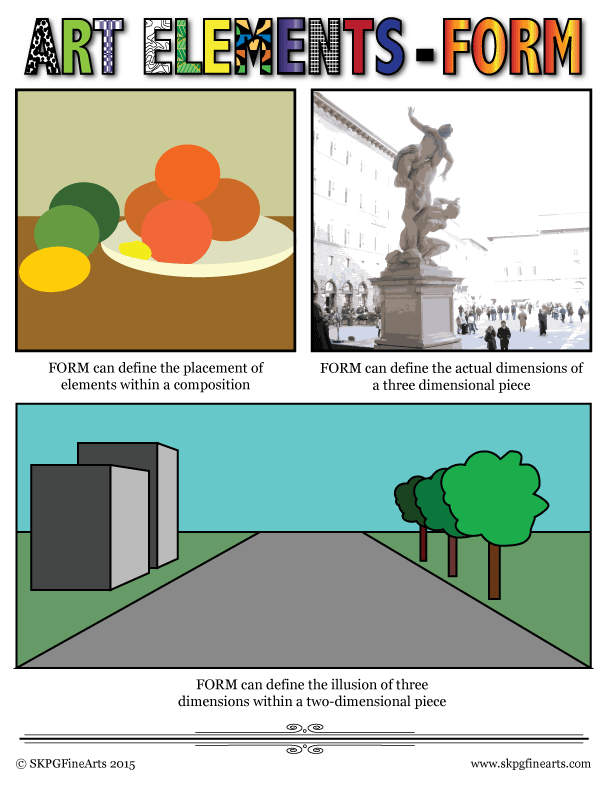an element of art |
Form:
–noun
8. Fine Arts -
a. the organization, placement, or relationship of basic elements, as lines and colors in a painting or volumes and voids in a sculpture, so as to produce a coherent image; the formal structure of a work of art.
b. three-dimensional quality or volume, as of a represented object or anatomical part.
Dictionary.com Unabridged Random House, Inc. 09 Dec. 2010. <Dictionary.com http://dictionary.reference.com/browse/form>.
Form - in its widest sense, total structure; a synthesis of all the visible aspects of that structure and of the manner in which they are united to create its distinctive character. The form of a work is what enables us to perceive it.
Form also refers to an element of art that is three-dimensional (height, width, and depth) and encloses volume. For example, a triangle, which is two-dimensional, is a shape, but a pyramid, which is three-dimensional, is a form. Cubes, spheres, ovoids, pyramids, cone, and cylinders are examples of various forms.
Delahunt, Michael R. "Form." ArtLex Art Dictionary 14 May 2010. 09 December 2010 <http://www.artlex.com>.
FORM can refer to the organization or structure of a piece of artwork. It can also refer to the actual three dimensional structure or the illusion of three dimensions in a two dimensional artwork. Value can be closely linked to form in a two dimensional artwork.
In three dimensional artworks, form describes the structure of the actual piece. The following sculptures have three dimensional form.

Michelangelo Buonarroti, statue of Saint Paul in Siena Cathedral, Italy; marble; 1501-1504

Auguste Rodin; The Thinker; bronze; 1881.
In two-dimensional artworks, form refers to the placement of the artistic elements on the two dimensional surface - the color, shapes, lines, etc. The form of an object in an artwork can refer to the illusion of a three dimensional object on a two dimensional surface. The variety of values on the fruit in the painting below give the illusion that the fruit has form (or three dimensions).

Paul Cezanne; Still Life with Apples; oil on canvas; 1890
The images above are in the public domain.

Click on poster above for a larger, printable version.
Both realistic and abstract sculpture can show form. The links below show the wide variety of form in sculpture.
Auguste Rodin
Henry Moore
Latchezar Boyadjiev
Clement Meadmore
James T. Russell
M. C. Escher's two dimensional work shows form in both the arrangement of elements and the illusion of three dimensional depth simultaneously.



